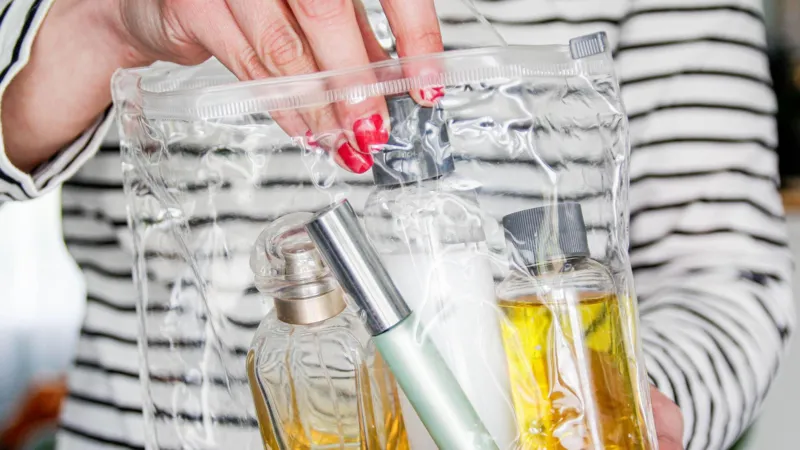Air travel enthusiasts who were hoping to say goodbye to the era of “small toiletries” are again facing disappointment. European airports are reintroducing a strict 100ml limit on liquids in cabin baggage, a rule that had been temporarily relaxed in some locations. The move signals a return to older, more restrictive policies due to a “temporary technical issue” with new security scanners. The change mirrors a similar change in the UK earlier this summer and affects travellers who had begun to enjoy more lenient rules.
Back to 100ml limit
For many, the 100ml limit on liquids, gels and pastes in hand luggage has long been an inconvenience. The rule, which requires these items to be stored in a transparent, re-sealable plastic bag, has been a staple of air travel security since its introduction. This restriction was initially imposed following security concerns and remains a key part of airport procedures worldwide.
However, in recent years, advances in technology have promised to ease these barriers. New security scanners using CT X-ray technology were expected to allow larger volumes of liquids to pass through, making the strict 100ml limit obsolete. Airports in some European cities, such as Rome and Amsterdam, began testing these advanced scanners, and some even eased their rules to allow larger volumes of liquids.
Optimism about these new scanners was tempered by the reality that not all airports were able to implement them immediately. So far, about 350 such scanners are in use in 13 EU countries, including Germany, Ireland, Italy, Lithuania, Malta, the Netherlands, and Sweden. Despite this, a technical problem with the new equipment has forced the relaxed rules to be temporarily withdrawn.
The technical glitch and its implications
The European Commission’s decision to reinstate the 100 ml limit is rooted in a technical problem with the new scanning machines. Although the specific nature of the problem has not been disclosed, reports suggest that the scanners may struggle to accurately assess some liquid containers. This inaccuracy could pose a risk to security and has led to the reintroduction of the old rules until a solution is found.
Olivier Jankovec, director general of ACI Europe, criticized the decision, calling it a setback for passengers and saying it was a setback for the significant investment made by airports in the new technology. He expressed concern that withdrawing the old rules undermines confidence in the EU’s aviation safety certification system and penalizes airports that adopted this technology early.
What happened in the U.K.?
The U.K. had planned to phase out the 100 ml liquid limit this year as part of a wider initiative to enhance airport security with state-of-the-art scanning equipment. The goal was to have all airports equipped with the device by June 2024, but the change has not gone smoothly. While some smaller airports like London City and Teesside met the deadline, major hubs like Heathrow, Gatwick and Manchester faced delays due to construction work and supply chain issues.
In June, the UK Department for Transport announced that the 100ml limit would be reintroduced at airports that had previously relaxed the rule. This sudden reversal disappointed many passengers and airport operators, who had to quickly adjust their procedures.
The way forward
The European Commission’s announcement in late July formalised the decision to revert to the 100ml limit. The change is not in response to any new security threat, but is intended to address technical issues with the new scanners. The Commission has not given a timeframe for when the relaxed rules might return, but it has promised to work on a “quick technical solution”.
In the meantime, travellers should be prepared for the old restrictions to remain in place. It is advisable to check the specific rules at both departure and return airports before travelling. The UK government has indicated that it is working with manufacturers, airports and international partners to lift the restrictions as soon as possible.
Impact on passengers and airports
The return to the 100ml limit affects many aspects of air travel. For travellers, this means once again following the rules about packing liquids into smaller containers and placing them in a clear plastic bag. This can be particularly inconvenient for those who have bought larger bottles of items such as sunscreen or perfume during their travels.
For airports, the rollback represents both a logistical and financial challenge. Airports that have invested heavily in new technology are now faced with the task of re-implementing the old rules, which can disrupt operations and impact the passenger experience. The situation is a combination of the complexity of updating security procedures and the increased risk of accidents that arise when new technologies encounter unexpected issues.
